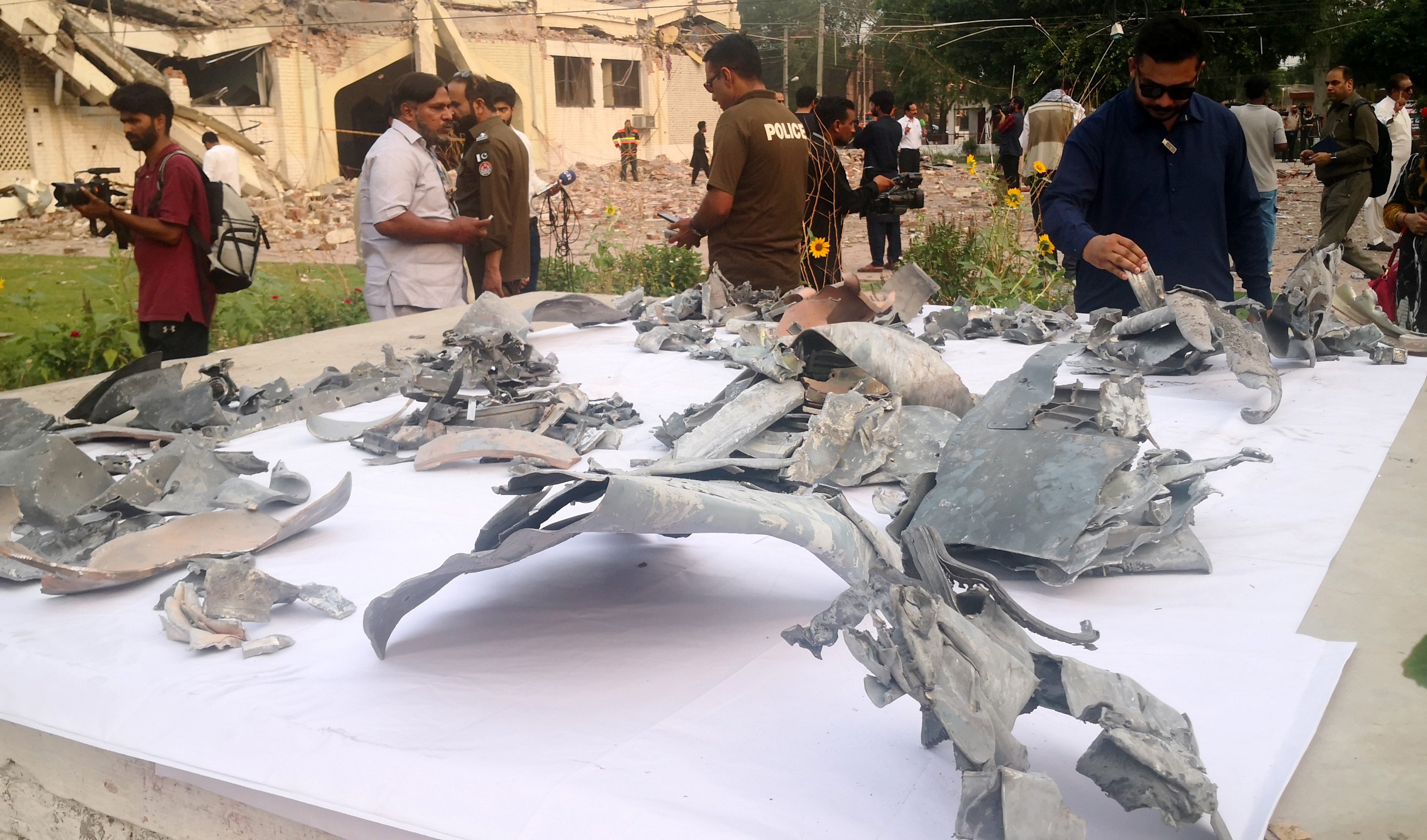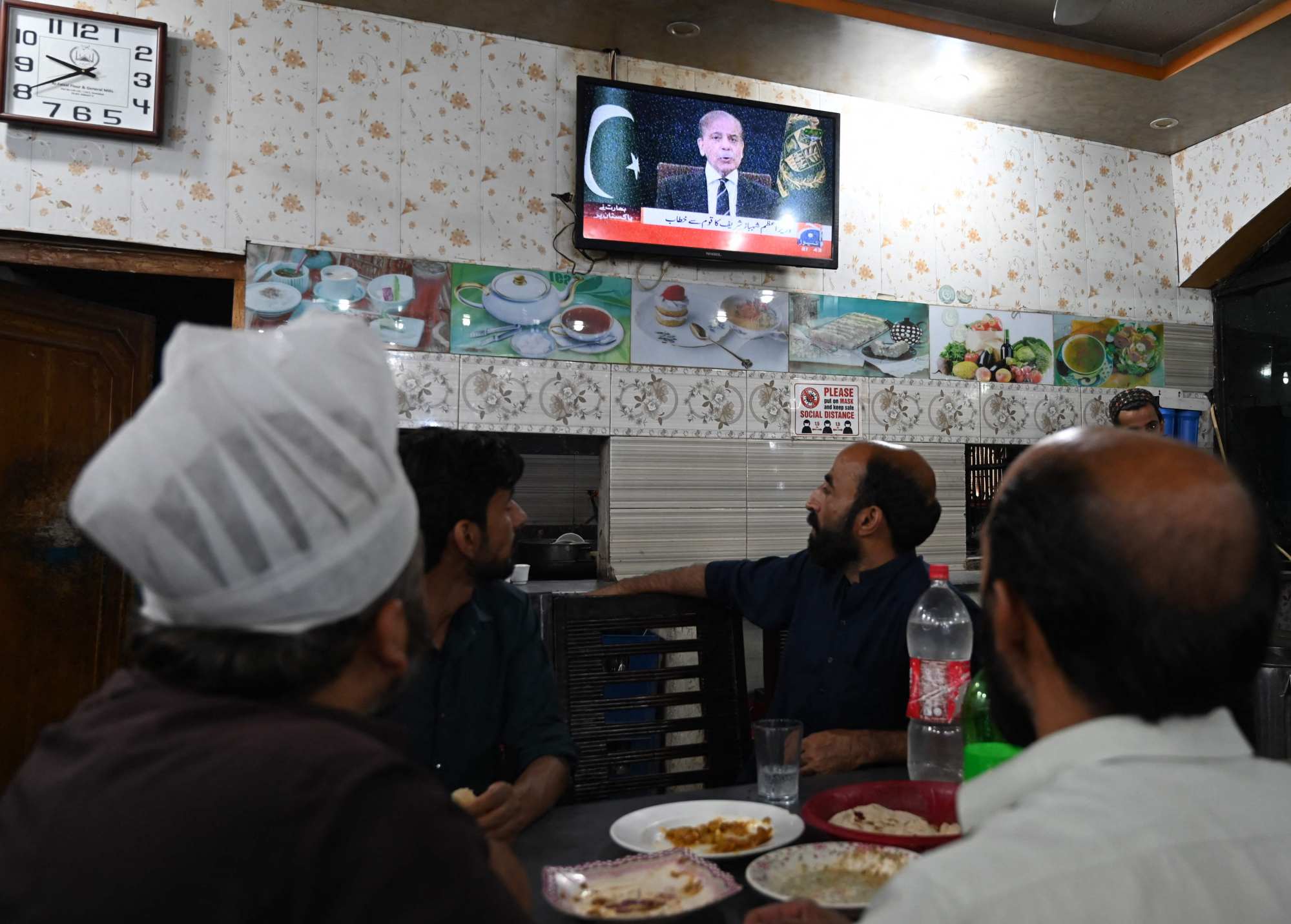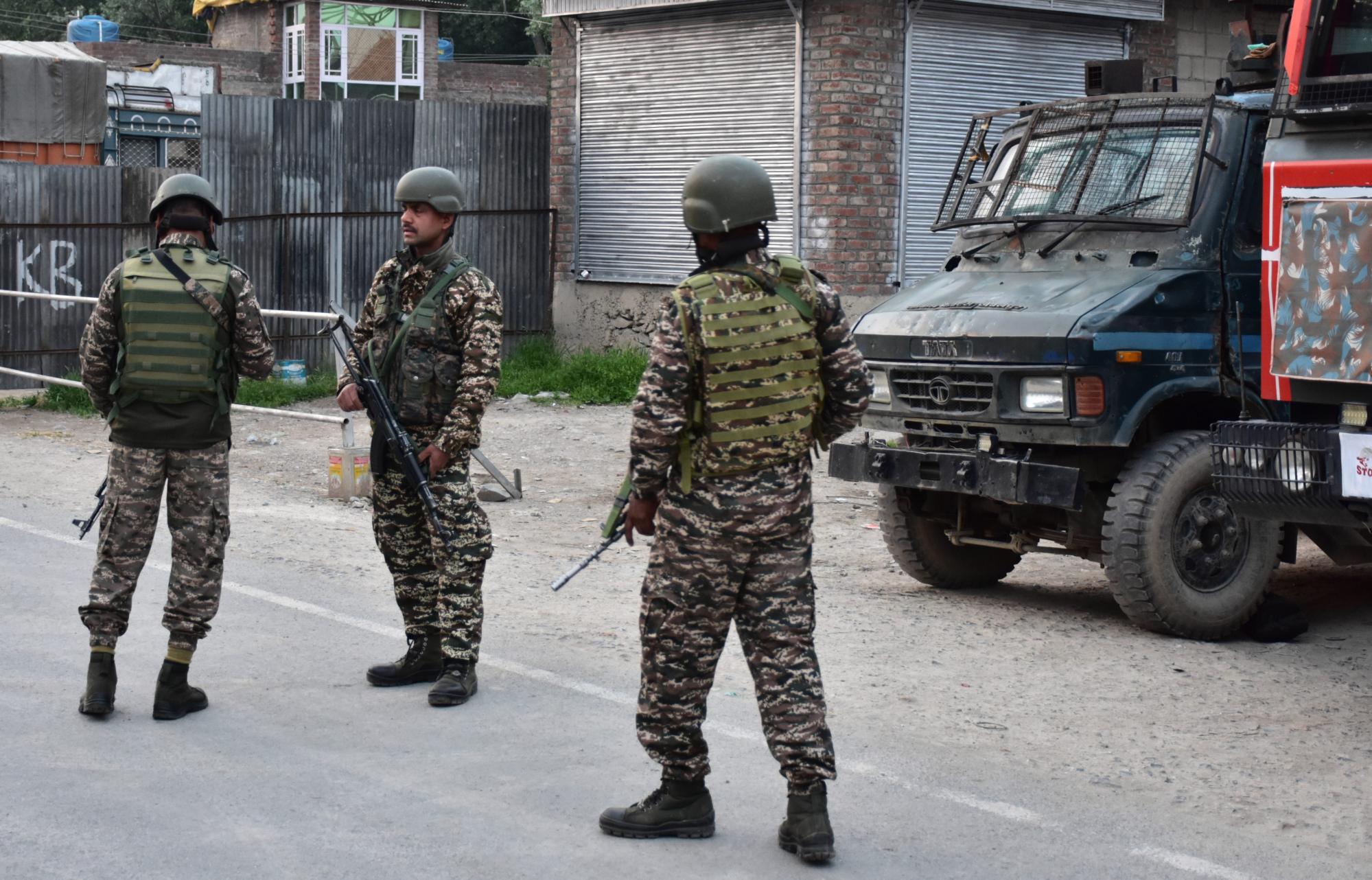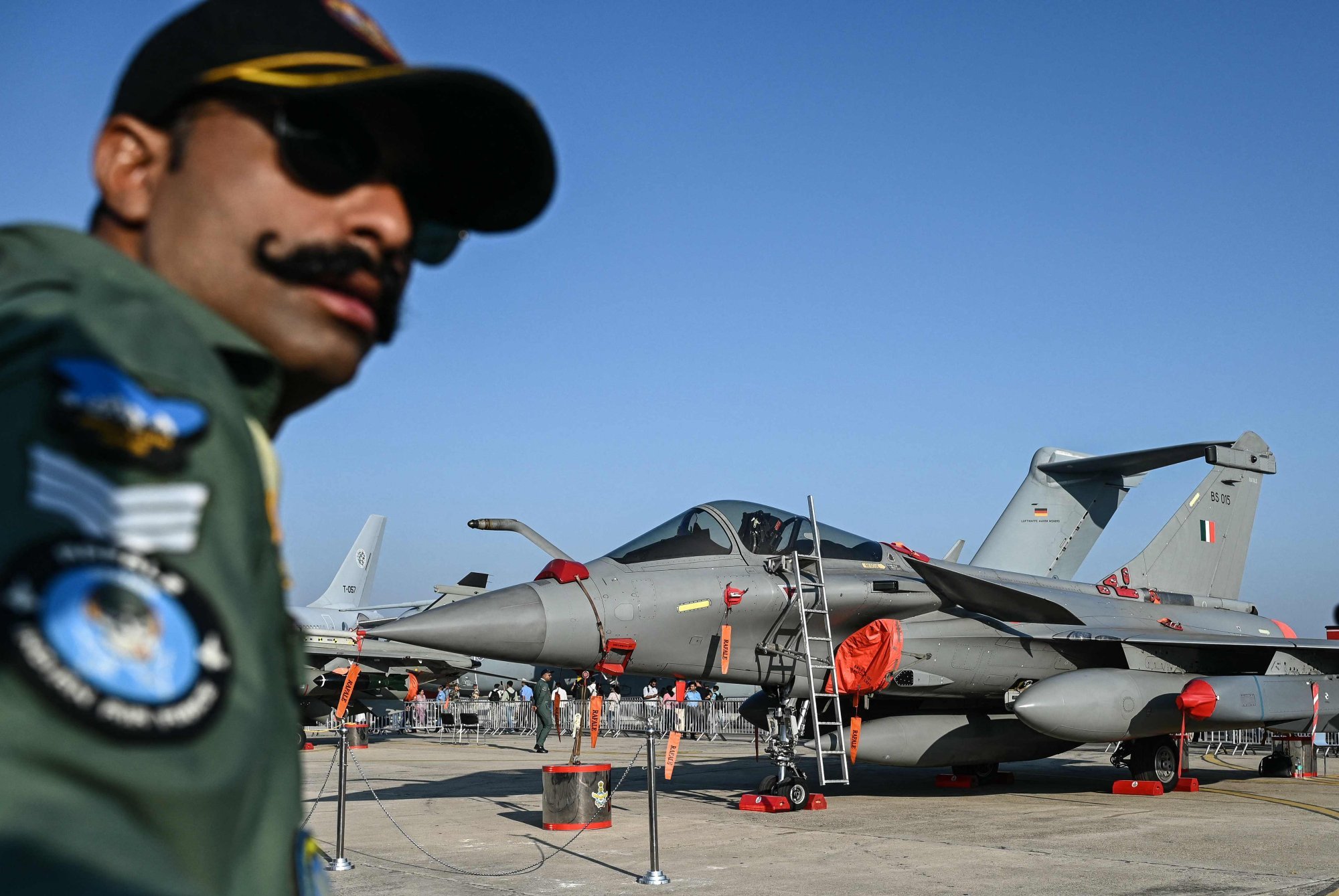India-Pakistan conflict a war of ‘narratives’, with Chinese arms playing part
Both countries can claim victory in the tit-for-tat clash, depending on how they frame their arguments, experts say

Millions of Pakistanis, riled up by government vows of revenge which social media pundits predicted were imminent, spent a tense night waiting for a second round of aerial clashes with India.
The tension was palpable as the witching hour approached.
At around 11pm on Wednesday, Pakistani military-linked social media accounts put out alerts claiming warplanes on both sides had taken off.
Revenge for India’s air strikes the previous night was nigh, they vowed, echoing a wartime speech made by Prime Minister Shehbaz Sharif and remarks by the military’s chief spokesman Lieutenant General Ahmed Sharif Chaudhry earlier in the evening.
Indian journalists joined the fray at around 1am on Thursday, posting claims that another round of Indian missile strikes was under way on Sialkot, a garrison city near the border otherwise renowned for producing footballs for the Fifa World Cup.
Nerves jangled as police squads forced shopkeepers in Islamabad to close early and gated suburban communities near military installations instituted a power blackout.

Then came news from Deputy Prime Minister Ishaq Dar that the national security advisers of Pakistan and India had spoken for the first time since the crisis exploded on April 22, following a terrorist massacre of mostly Indian tourists in the part of Kashmir that New Delhi administers.
Sleep-deprived and nervously exhausted, Pakistanis shook off the fog of war and went to bed, hoping for the best.
Rising for dawn prayers at 5am, they were greeted by birdsong – but the conflict was anything but over, bleary-eyed analysts said.
India had “crossed two significant thresholds” in the early hours of Wednesday, Washington-based South Asia security analyst Asfandyar Mir said.
First, it dramatically increased the scale of its terrorist targets in Pakistan to nine locations from just one the last time the two countries had clashed in 2019 over a lethal attack in Kashmir.
And second, India had struck into Pakistan’s heartland – specifically Punjab province, “which represents a major political escalation and breach of sovereignty that Pakistanis would want avenged”, Mir said.
“This conflict will likely advance to the next level of escalation”, despite potential limiting factors like India’s focus on terrorist infrastructure rather than military targets, and Pakistan possibly inflicting damage on Indian military assets during retaliation, he said.
‘Narrative war’
According to South Asia political analyst Michael Kugelman, the “narrative war is critical here”.
Pakistan may have “hit back hard” by shooting down at least three Indian warplanes on Wednesday, but Delhi’s “messaging is focusing on the high-intensity strikes that took out terrorist targets in Pakistan”, he told This Week In Asia.
In that sense, Indian Prime Minister Narendra Modi “can project this dynamic as a victory”. Pakistan might have responded, but India “achieved its counterterrorism objective, and with a shock and awe display of force”, Kugelman said.
Pakistan, meanwhile, was celebrating the apparent success of its air force, in particular the performance of pilots operating JF-17 lightweight fighters co-developed with China alongside the more advanced J-10C combat planes it had recently acquired from Beijing.
Armed with Chinese beyond-visual-range missiles and supported by Chinese air defence systems both capable of hitting targets over 150km (93 miles) inside India, Pakistan’s forces had maintained the country’s long-standing air superiority, officials said.
They cheered even louder when CNN, citing senior French intelligence sources, last night reported that an advanced Rafale fighter operated by India had been shot down by Pakistan, marking the first such loss in combat of Paris’ best warplane. A French investigation was under way, the news media reported.

Pakistan claims to have shot down three Dassault Rafales, along with a much older French Mirage-2000 and Russian Sukhoi-30, the mainstay of the Indian air force.
The South Asian nation has not answered these claims, but journalists based in India’s Punjab state and Delhi-run Kashmir located the wreckage of three planes on Wednesday with the help of members of the public who posted photos on social media.
“What we are seeing in this crisis is that the Pakistani military’s war-fighting capabilities are greatly bolstered by Chinese arms,” Kugelman said.
The American weaponry in Pakistan’s arsenal – including F-16 warplanes – was “meant to be used for counterterrorism, not against India”, he said. “So that limits the scope of [Pakistan’s] use of US weaponry and makes the Chinese products all the more important.”
Chinese military technology
If Pakistan’s claims of shooting down a Rafale using Chinese military technology were proven correct, discussions among arms manufacturers and analysts about its relative advantages over France’s finest were bound to ensure, said Abdul Basit, a senior associate fellow of the International Centre for Political and Terrorism Research at Singapore’s Rajaratnam School of International Studies.
“If true, it will be news for the manufacturers of Rafale,” he said.
Christine Fair, a professor of security studies at Georgetown University’s Walsh School of Foreign Service in Washington, said China has “an interest in seeing its air assets, which thus far have not been battle tested, tested against European aircraft”.

But Beijing “doesn’t want an all-out war” between its Himalayan neighbours, so there was “a sweet spot for China regarding the nature and duration of this conflict”, she said.
Basit agreed, saying Beijing was yet to boost “iron brother” Pakistan with fresh supplies of weaponry.
China’s interest lay in preventing the conflict from “spiralling out of control” because its US$28 billion of Belt and Road Initiative projects in Pakistan were “invested in peace”, he said.
While Pakistan’s claims of shooting down Indian warplanes had not been independently verified, Fair said the story – true or false – might provide “an off-ramp for de-escalation”, especially since no aircraft was downed in Pakistani territory.
“The Indians can deny any such shootdown just as they fabricated their own [Pakistani] F-16 shootdown in 2019,” Fair said.
Kugelman said China “may not have as much capacity to shape this crisis as many may think” because its fraught relationship with India rules it out as a viable mediator.
And while it has deep defence ties with Pakistan, Beijing is “unlikely to want to send more arms to Pakistan during this crisis”.
Nonetheless, Pakistan’s use of Chinese military technology during the crisis with India has been a “notable factor … that certainly won’t be overlooked in Delhi”, Kugelman said.